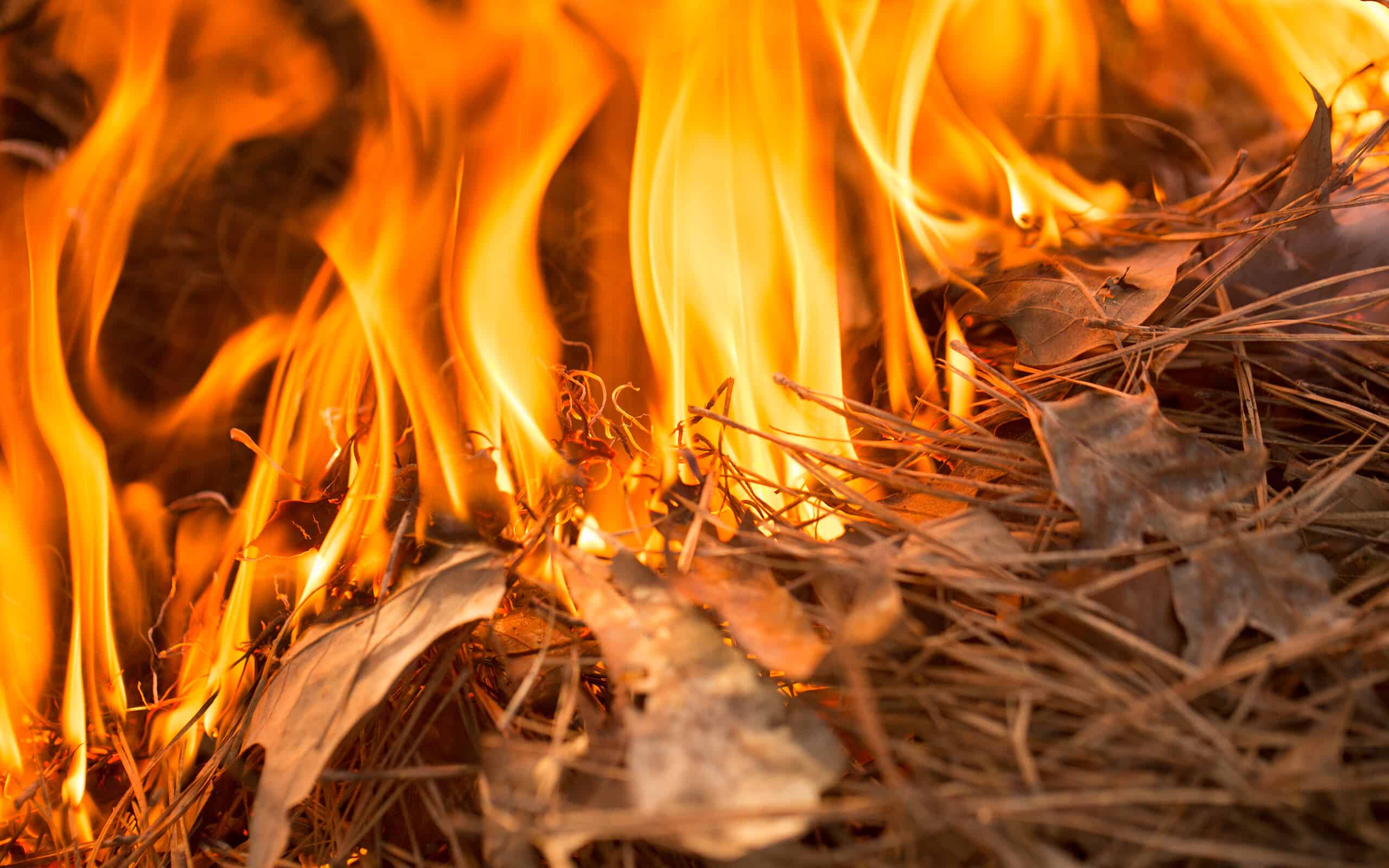Humans have been controlling fire for at least 400,000 years and probably for a lot longer. Our earliest ancestors learned how to use it for cooking, hunting, and making things. But we are not the only ones to experience this phenomenon. Whilst there are some animals that are terrified of flames, there are other animals that aren’t scared of fire and you may be surprised to learn how many there are!
Fire is simply the visible sign of combustion. This is a chemical reaction where the oxygen in the air reacts with a fuel. This could be gas (as in a car engine), or sticks and trees (as in a forest fire). Some animals have even adapted to use fire to their advantage, just like we did. Let’s take a look at the animals that aren’t scared of fire and explore why.
Brown Bears

Many brown bears are not put off by fire.
©Sergey Uryadnikov/Shutterstock.com
There is very little scientific evidence on how brown bears feel about fires but there is plenty of anecdotal evidence in online forums. Many people claim that brown bears have approached their camp fires, often attracted by the smell of cooked food. Some individuals were more cautious but others were not put off even when smoke and sparks were blown in their faces!
Black Bears
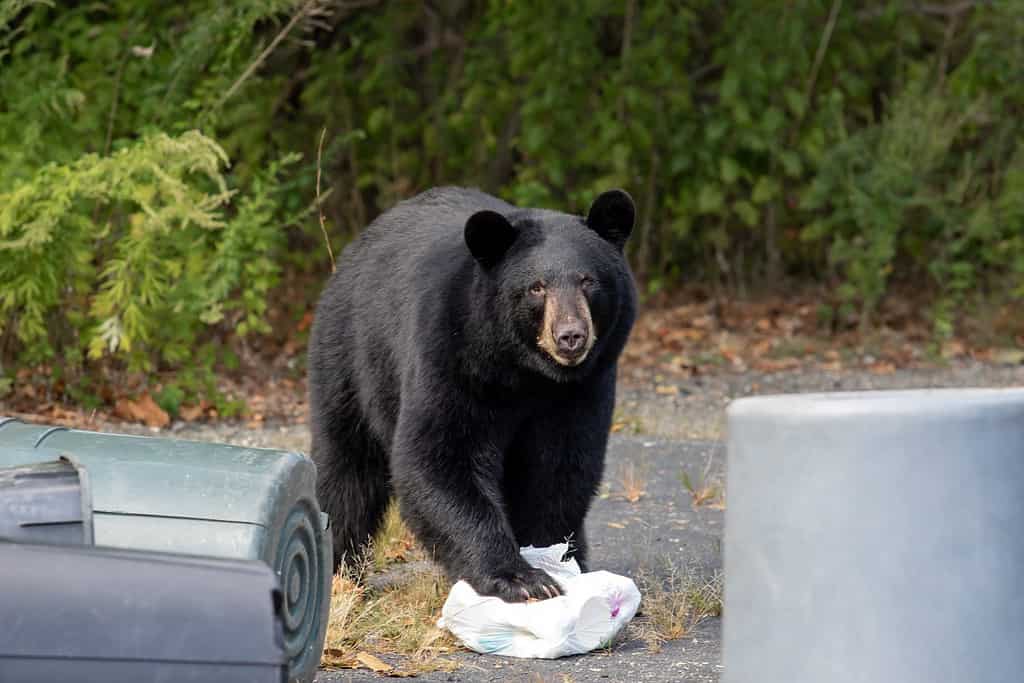
Most black bears will tolerate fire to get food.
©EleanorAbramson/Shutterstock.com
Many black bears are naturally cautious around humans and will avoid us if they can. This has led to people assuming that campfires are deterring the bears when humans are the actual deterrent. That said, many black bears will overcome any doubts they have about fire if food is involved. There is footage online of black bears pinching steaks from lit BBQs!
Cats
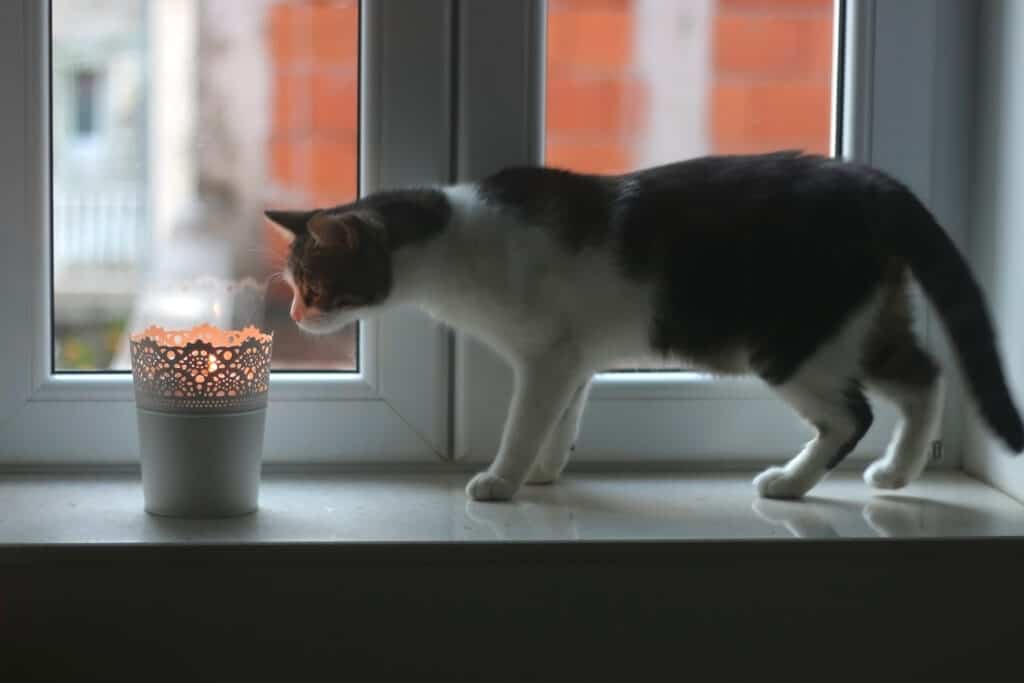
Candles are fascinating to cats.
©iStock.com/Jelena990
Some fires are bigger than others. No one is claiming that a cat would run into an inferno but many of them have no fear of candle flames whatsoever. Numerous owners have posted clips online of their pet cats staring at candles. Some cats become obsessed by them and try to touch the flames with their noses and paws. Cats are drawn to movement and so it is understandable that they are drawn to flickering light.
Wolves
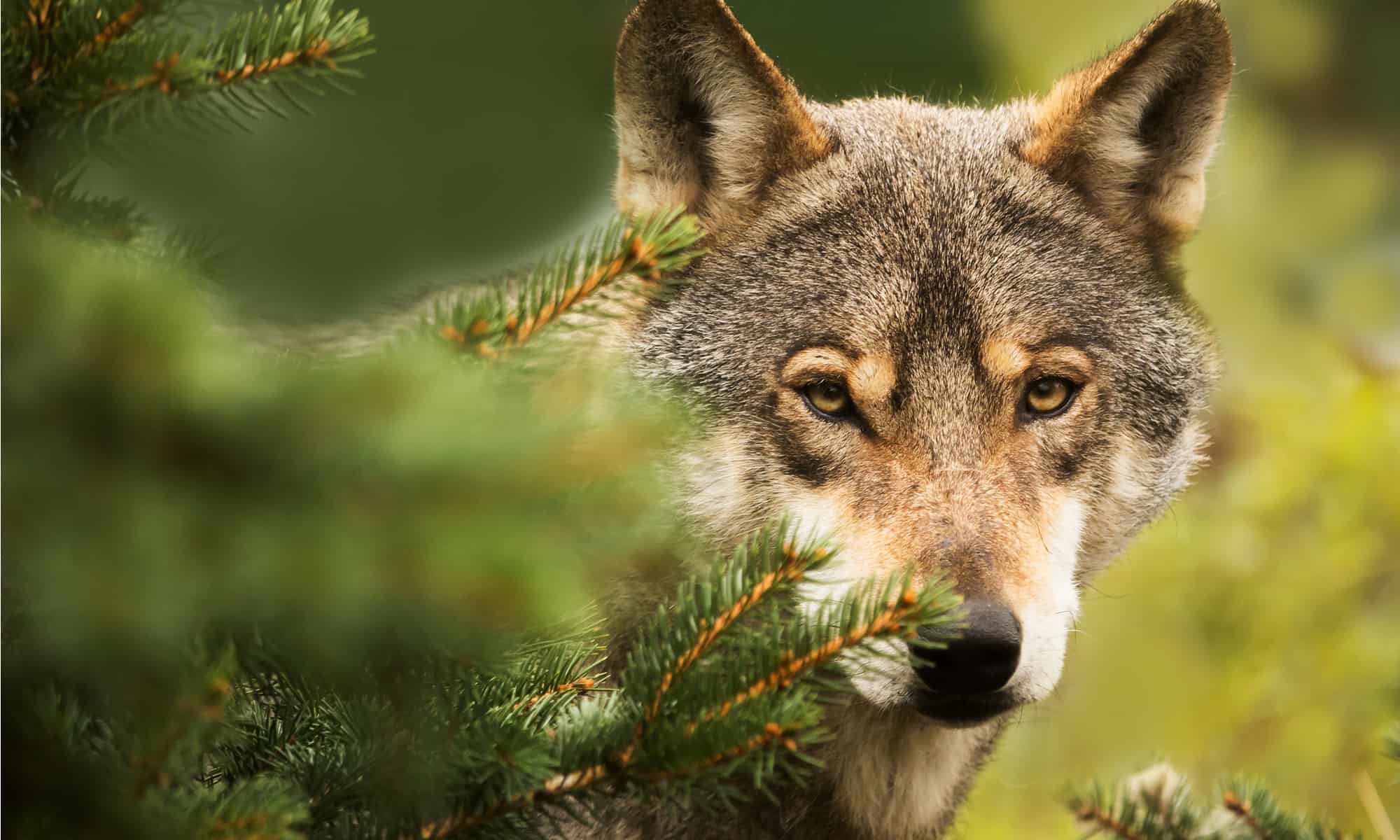
A wolf could be watching your campfire.
©Michal Ninger/Shutterstock.com
The traditional advice for hikers in the wilderness is to build a campfire to deter wolves but it is not as simple as that. Behavioral studies have shown that wolves show a mixture of curiosity and wariness towards campfires. They approach cautiously and circle downwind to assess the situation. Wind direction and noise levels also influence their behavior. What’s more, many outdoor enthusiasts claim they have seen wolves approaching unattended camp fires.
Firehawks
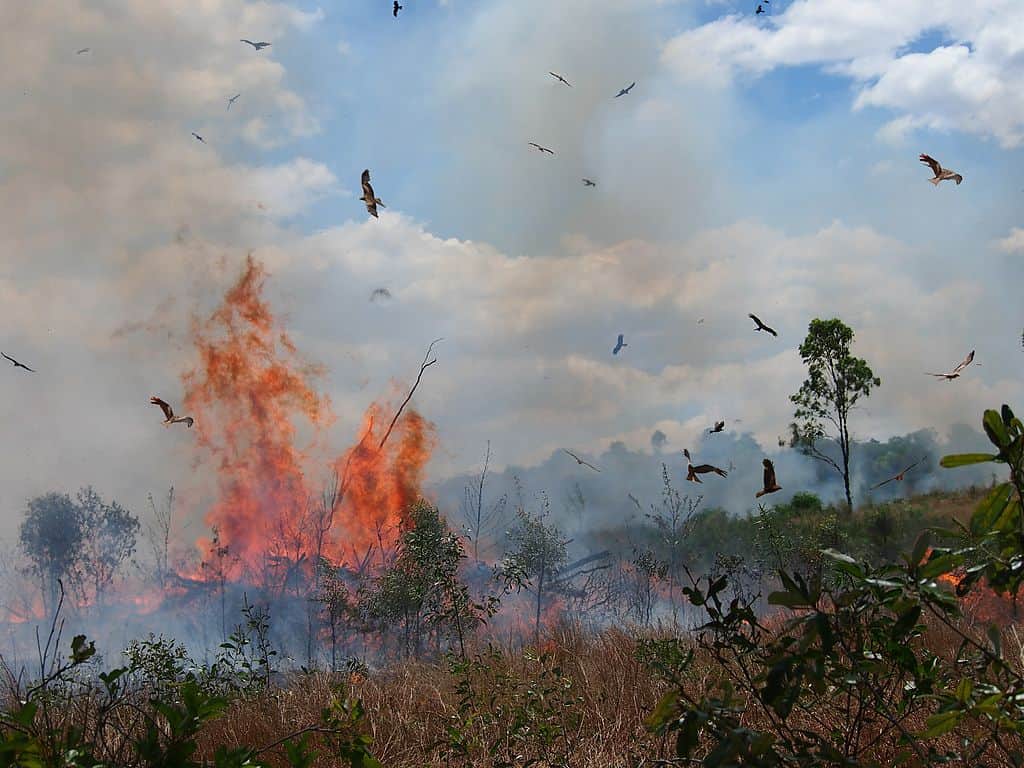
Some raptors spread fires by carrying burning sticks.
©Mark Marathon, CC BY-SA 3.0 , via Wikimedia Commons - Original / License
‘Firehawks’ is the name given by Aboriginal peoples to a group of birds that intentionally spread fire to find food. At least three species of raptors, including the Black Kite (Milvus migrans) pick up burning sticks in their beaks or talons and transport them to other places. They fly into raging fires to collect the smoldering sticks and carry them for over half a mile. The plan is to start new fires to flush out more small mammals and insects so that they can feed on them. There are some reports that caracaras do the same thing in Texas and Florida.
Raccoons

Raccoons soon learn that fire can mean food.
©Film Studio Aves/Shutterstock.com
The raccoon is a highly intelligent and resourceful creature. They have learned that humans have a lot of food around them and are therefore attracted to human settlements be that a suburban home or a camp in the forest. Many have become accustomed to the light and noise that humans create. Most raccoons are unlikely to be put off by a campfire. The opposite may be true! These guys have learned to associate campfires with food and so are actually attracted to them.
Snakes

Fires are a source of warmth for snakes.
©Alexander Wong/Shutterstock.com
If you want to keep snakes away from your camp, lighting a fire is not the best approach. Snakes are cold-blooded and need to find warm spots to heat up their bodies. It is not unusual to see snakes basking in the warmth of a campfire. If snakes get caught in wildfires, however, they will try to escape quickly. If the fire is moving too fast, they will attempt to hide out underground until it passes.
Lizards

A lizard can learn to avoid fire but may also use it for warmth.
Lizards are also coldblooded and there are reports of lizards being attracted to campfires on cold nights so that they can warm themselves up. However, there is also evidence that lizards can learn to keep away from fire. A study found that lizards who live in burned areas were more sensitive to the sound of fire than those living in urban areas.
Fire Beetles

Firefighters have been bitten by fire beetles.
©© Chuck Moser/iStock via Getty Images
Some beetles love fire! They arrive in large numbers at forest fires so that they can lay their eggs on the burnt trees or soil. Some travel over 50 miles to reach the fire. They have even been seen crawling inside the protective suits of firefighters and biting them! Insects that actively seek out fires are called pyrophilic.
Smoke Flies
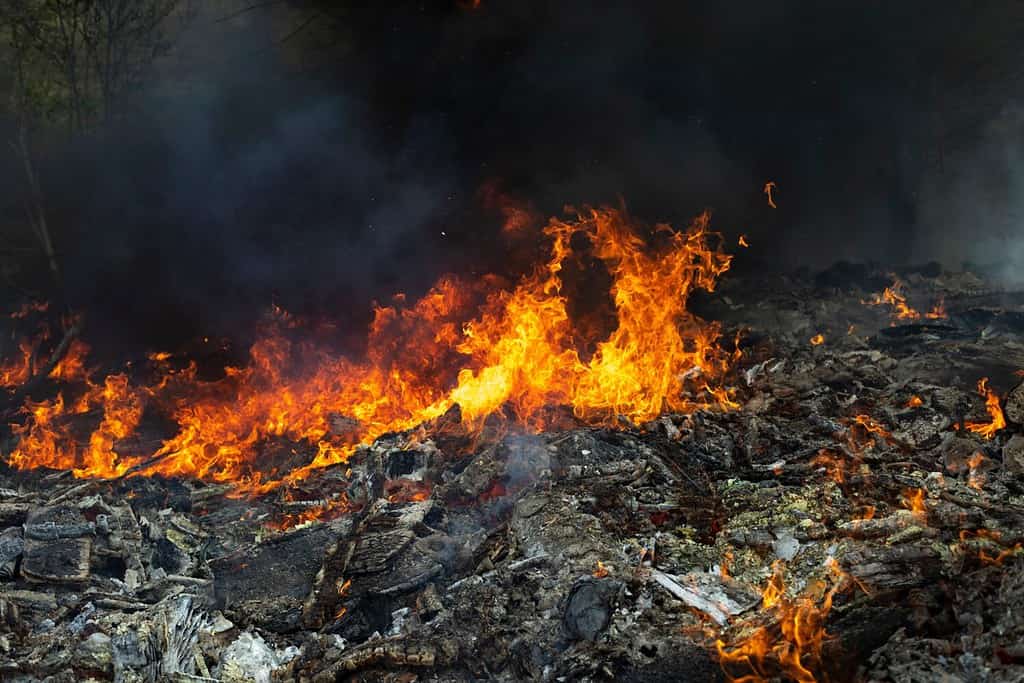
flies are attracted to smoke and fire.
©Oleg Kopyov/Shutterstock.com
Several species of flies also head towards forest fires when other animals are running away. One example is the Microsania flies which are strongly attracted to smoke and form mating swarms above plumes given off by fire. They have special senses that allow them to find their way around even active fires. These flies arrive in large numbers even when the fire is still burning. Some flies are rarely found at all outside of burnt areas so fire is crucial for their lifecycle.
Echidnas
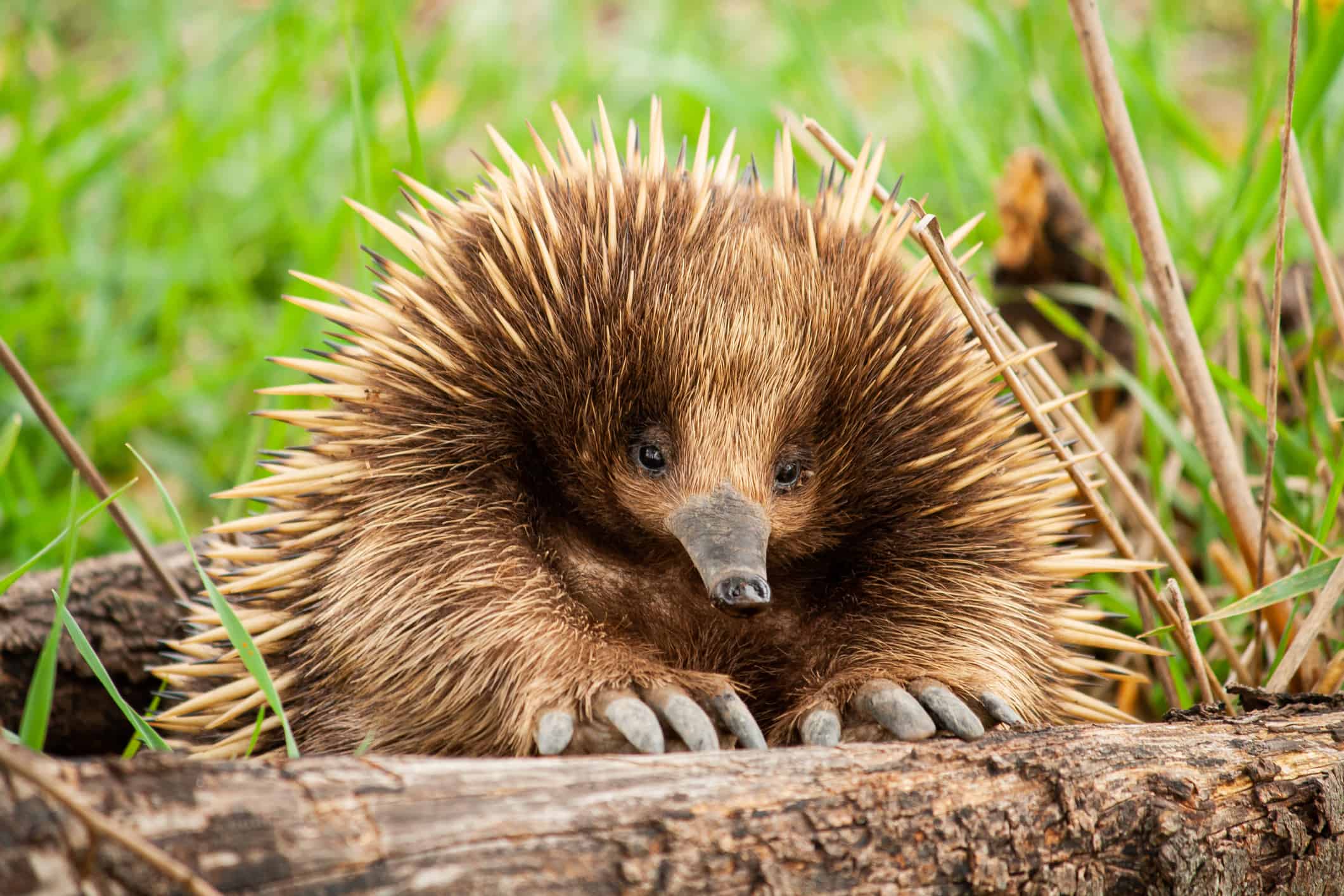
A state of torpor protects echidnas from fire.
©Jarrod Calati / via Getty Images
It would not be true to say that echidnas love fire, but they are not that scared of it either! These amazing creatures look like a cross between an anteater and a porcupine and are found in Australia, Tasmania, and New Guinea. There are great advantages in being able to survive a fire that wipes out all of your competitors! Scientists now believe that echidnas enter a kind of torpor (an extreme lethargic state) as the fire passes. They hide out in deep underground burrows where they can tolerate temperatures of 35–40°C for up to 10 hours.
Thank you for reading! Have some feedback for us? Contact the AZ Animals editorial team.

